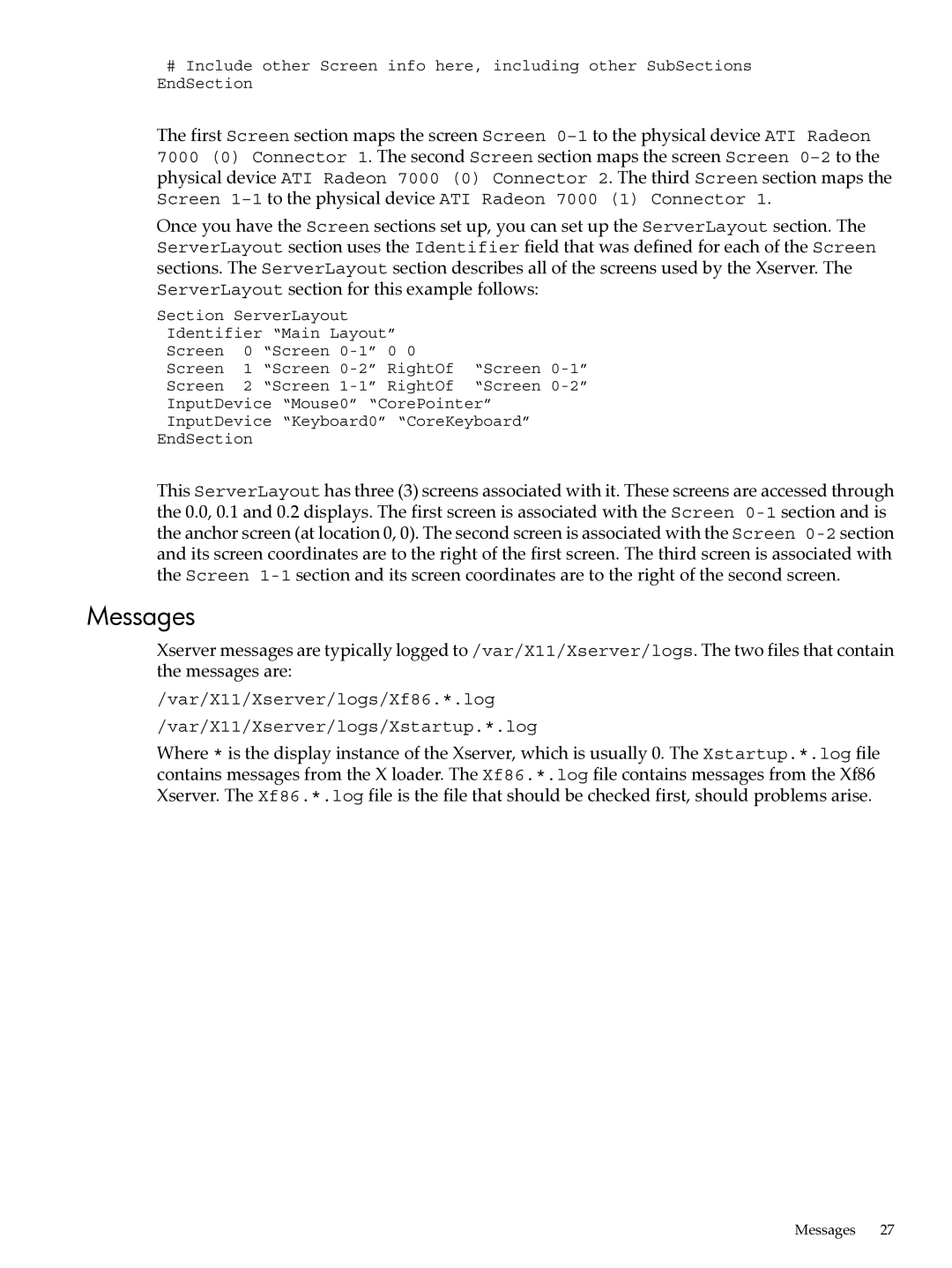#Include other Screen info here, including other SubSections EndSection
The first Screen section maps the screen Screen
Once you have the Screen sections set up, you can set up the ServerLayout section. The ServerLayout section uses the Identifier field that was defined for each of the Screen sections. The ServerLayout section describes all of the screens used by the Xserver. The ServerLayout section for this example follows:
Section ServerLayout
Identifier “Main Layout”
Screen 0 “Screen
Screen 1 “Screen
Screen 2 “Screen
InputDevice “Mouse0” “CorePointer”
InputDevice “Keyboard0” “CoreKeyboard”
EndSection
This ServerLayout has three (3) screens associated with it. These screens are accessed through the 0.0, 0.1 and 0.2 displays. The first screen is associated with the Screen
Messages
Xserver messages are typically logged to /var/X11/Xserver/logs. The two files that contain the messages are:
/var/X11/Xserver/logs/Xf86.*.log
/var/X11/Xserver/logs/Xstartup.*.log
Where * is the display instance of the Xserver, which is usually 0. The Xstartup.*.log file contains messages from the X loader. The Xf86.*.log file contains messages from the Xf86 Xserver. The Xf86.*.log file is the file that should be checked first, should problems arise.
Messages 27
